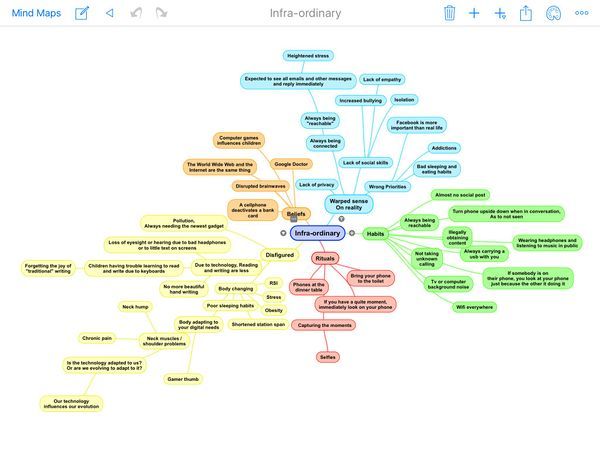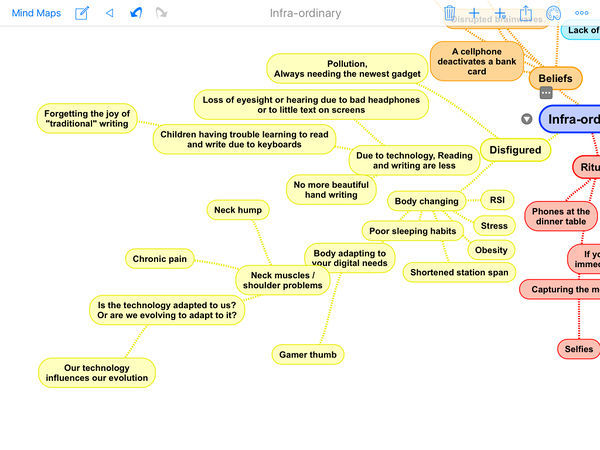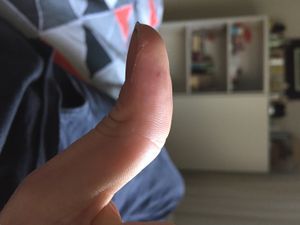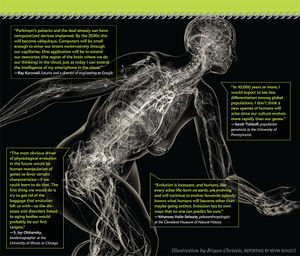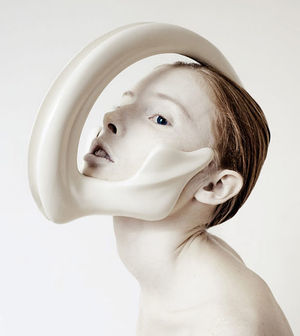User:Pascalle/UTC
Contents
UNRAVEL THE MEME
Never before Has our reality been as questioned and as debated as in our society today. Through sharing experience and culture Our reality is being redefined and shaped everyday
INFRA-ORDINARY
Design/make/craft one or more objects, spaces (or both) that address changes in physical and/or social behaviour in public and private space due to digital devices. The final design must be based on findings from your initial research and should relate to a clearly articulated perspective. Examples of possible perspectives are: critical, speculative, practical, visionary or other.
INTIAL BRAINSTORM
- People have certain rituals that have come form the digital
- Brainwave disruption
- Body adapting to technology?
- Google dokter
RESEARCH
After first receiving the assignment, I started to research the habits we have developed due to our digital culture, I thought it would be interesting to analyze daily customs and see which digital patterns would emerge, that might have gone on noticed. By means of field research I went out and observed Observations
Field Observations
- I found that often more female’s than male’s are on their phone’s when alone then male’s were.
- People of all ages listen to music on public transportation.
- On short trips in public transportation from about 10 to 40min about 70% is on a electronic device, either a laptop, tablet or phone. Whereas on trips longer than 40min, more people were either reading, taking a nap or just looking out the window. This surprised me because I would assume it would be the other way around.
- Most people take their phone with them to the toilet. Which is actually a little strange to me, because this is a private moment, but your taking your portal to the internet with you.
- When people are together, they are more likely to be on their phone all together. It’s almost contagious, as soon as one person starts, people are inclined to do the same.
- A person’s body languages can tell if someone is on their phone.
- Turning your phone over, when someone really wants to pay attention
- My brother seems to have a more opposable thumb. We think this is due to his obsessive videogame playing on the Nintendo, Xbox, Playstation and computer.
- Body adoptions to technology
MINDMAP
I made a mindmap with the information I had gathered. With this mind map I was able to formulate a research question for myself.
Is the technology adapted to us? Or are we evolving to adapt to it?
I have always been fascinated by my brother’s more opposable thumb. The possibility that it could be a result from digital culture, was something we, as brother and sister always speculated about. My brother has been captivated with electronic from a young age. I remember him playing Playstation for at least four hours every day, either together with me, friends or alone. I never noticed his thumb was different than mine until I was about 13. When I asked my brother what had happened, he didn’t even realize his thumb was different than ours. His thumb is more flexible and is able to reach a keys on the keyboard that are further apart. All this helped him when he was gaming and now with his job as a robot programmer.
EVOLUTION
We have been evolving due to our technology since the earliest cave people, simply by making tools and cooking our food. The technology had one purpose, helping us survive. Tools are a aid to species to otherwise challenging environments. By cooking the our food, we made it softer and easier for our bodies to chew and digest the food. Thus we no longer needed big strong jaws to chew raw subsistence , and as a result led to a mutation that reduced the size of our ancestors’ jaws, which gave them the capacity for speech and freed up space in their skulls for bigger, more advanced brains. According to author Richard Wrangham of Catching Fire. Assuming this is true, one might say that because humans use to most tools, it is logical to assume that we as a species have gone through the most radical changes.
“Evolution is not a process that allows us to predict what will happen in the future. We can see what happened in the past only. To do that, we would need to know what was causing some individuals to leave more surviving descendants than others, and to be sure that that selection pressure would be maintained for hundreds or thousands of generations, and know what the genetic and phenotypic basis for the variance underlying these differences was. We don't and really can't know any of those things, so all I can say is that we should come back in a million years and see what happened!” —paleoanthropologist Carol V. Ward of the University of Missouri
It is in our human nature to innovate and create. We will always try to find ways of compensating for the things we perceive as “deficiencies”. Create, adapt, create adapt, we could not evolve without these two key elements. Over the past 50 years we are increasingly relying on technology, even the most basic things such as finding your way to a friend’s house or knowing which bus to
take.
Ana Rajcevic: Animal the other side of evolution These sculptural pieces are made by Ana Rajcevice. She is graduated from the London College of Fashion and in 2012 received the Fashion MA Design award. Her Series Animal: the other side of evolution, feature a series of tusk, horns and spines seemly an extension of the human body. It is a unique visual interpretation of the animal anatomy. Building upon the existing human skeleton, the proportions seem almost natural and suggest according to the artist: “Strength, Power and sensuality”. They pieces are made from fibreglass, resin and silicone.
